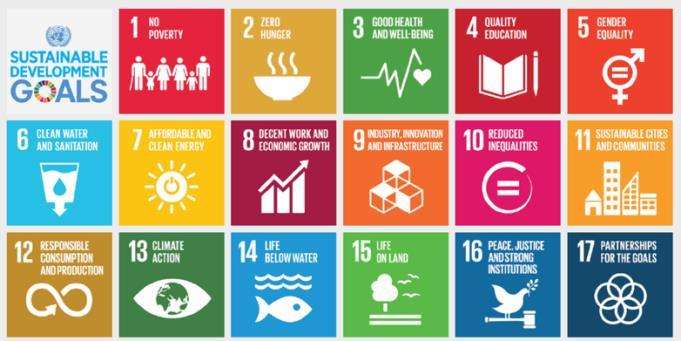
5 minute read
Urban Race for SDGs
Research Summary
October 2020 UrbanDNA and Imperial College London
Advertisement

Cities caring about SDGs
Cities are increasingly becoming the primary vehicles of change worldwide.
The global population are predominantly urbanites. Most economic trade emerges from cities. And cities sit fair and square in the heart of global emissions and energy consumption. Such stature places cities at the source of the need for change, and the very mechanism that must lead it.
SDGs are the vital basis to make a step-change to a sustainable future for all.
In 2015, the United Nations launched the SDGs as successors to the Millennium Development Goals (MDGs). The SDGs – unlike the MDGs which focused on raising up developing countries – set targets for both developing and developed societies. The world agreed to a new ambitious agenda to end poverty, reduce inequality, and provide access to safe nourishment everywhere by 2030. 17 goals, and 169 targets shape society's path toward sustainability. Figure 2: UN Sustainable Development Goals (SDGs)
Only one SDG, #11, explicitly addresses cities; however, all are highly relevant in urban contexts.
OECD data shows that 65% of the 169 SDG targets can only be accomplished if cities and regions get involved. Many cities think more. This is a result of the breadth of local administration's influence on infrastructures and services that affect all aspects of our daily lives (housing, water, sanitation, health, leisure, public realm, etc.). The SDGs are important to cities as they offer a common framework and language for the exchange of ideas. Tackling the U.N.'s 2030 Agenda through the SDGs is an essential first step in securing sustainable prosperity for our planet towards 2100 – a time horizon that we neglect at our peril.
Yet most cities, by their admission, are not succeeding at implementing the SDGs, despite their enthusiasm and support
Cities need tools, cases, and confidence to realise the tangible benefits of acting on the SDGs and help in accessing the finance and funding to deliver on their SDG programmes.
Despite the COVID crisis is stealing cities attention, the SDGs remain a priority, as long-term global challenges will not fade away.
While cities have shifted focus due to COVID-19, the recognition of the holistic nature of the SDGs has resulted in many cities still powering ahead with their SDG initiatives and programmes. Confronting a once-in-a-century (at least for now) public health crisis requires the orchestration of resources, institutions, and citizenry not seen since the Second World War. And cities are rising to the challenge. What they lack is the ability to ensure they do not do so individually, from first principles.
Given the severity of the crisis, one might expect to hear cities abandon the SDGs wholesale to reign in COVID-19. Interestingly, instead of abandonment, the current pandemic has merely hastened and magnified trends that were already apparent before. Cities have simply reported a shift in priorities. Before the epidemic, cities were focused on regionally specific, logically based concerns. Now, most cities are emphasising health & wellbeing (SDG 3), and decent work & economic growth (SDG 8); although recognising that the SDG framework is holistic, so work on many of the 17 goals is ongoing. Additionally, most major economies are taking steps to align stimulus programmes with sustainability, often heralded as a 'fair green recovery'.
In the short term, cities are grappling with the prospect of reduced tax revenue from the loss of business activity. National governments are expected to play some part in bridging this gap; however, cities recognise that they will have to become more creative to maintain or expand current revenues. COVID-19 presents a common challenge for cities; opportunities do exist to emerge stronger and more resilient; however, careful forethought on crafting that future is required now.

Market Insights in localising SDGs
The research has highlighted seven core findings in our journey to achieve sustainability in cities.
1. Today there is no secret that cities worldwide are falling behind on delivering the 2030 agenda.
After five years the SDGs are still not sufficiently on the agenda of cities, in a 'business as usual' sense, and 2030 is just around the corner. Connecting national and local agendas is central to achievement.
2. SDGs remain the most common international language for sustainability.
The United Nations SDGs framework is one of the most accepted and adopted sustainability frameworks in the world for all stakeholder types. This validates that the high-level structure is relevant and right; however, clearly more is needed to stimulate the local actions that will deliver the required step-change.
3. Tackling all SDGs at once can be overwhelming and might hold back cities to act.
Cities recognise that their attention needs to extend beyond SDG11 (cities), however, the extent of the sustainability goals can block action. Cities should look to start the journey component by component.
4. Being accountable for SDGs does not necessarily mean extra work; more an adjustment of focus.
Sustainable development goals can be easily aligned with current city priorities and strategies to structure thinking for cities and facilitate exchanges at regional and national levels.
5. Good SDG examples do exist, however often fail to be tagged to the SDGs banner.
Many bench-learning experiences are available for cities on SDGs, however they are insufficiently and inconsistently captured, variably communicated, and often recognised under a different agenda. Cities leaders have also mentioned the need to capture failures examples.
6. Roles and responsibilities amongst different communities must be better understood and managed to stimulate actions.
This firstly requires clarity within city hall (as a ' convenor ') as to what these roles might be, to shape, co-develop, agree, and communicate them amongst stakeholders to ensure efficient and practical actions.
7. Finally, the voice of youths and females needs to be heard to drive the SDG agenda.
To be entirely credible, cities, more than ever, need to be seen to be listening, and These core findings are discussed further in details below across the SDGs city performance and a framework for actions.
Way Forward
Cities should not fear of dipping their toes in SDG waters. 2020 marks the start of this 'decade of action' , so a fresh approach and increased enthusiasm are needed to ensure our collective efforts result in the necessary accelerated step-change in impact on this vital agenda.
This research has underlined the urgency for cities to own the action and be pragmatic in action. We retain optimism that many goals can be achieved with a renewed mindset and approach. However, the clock is ticking…


